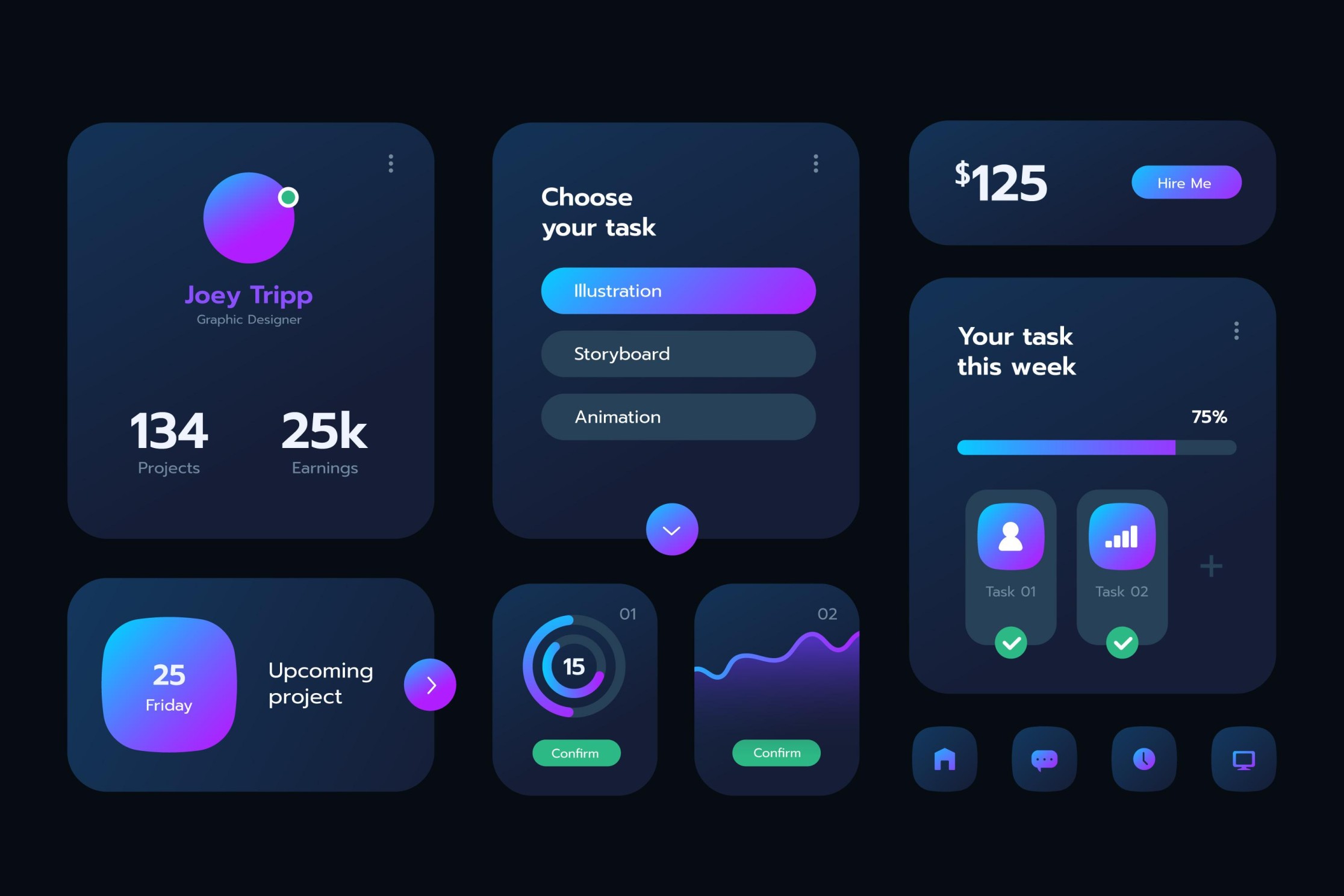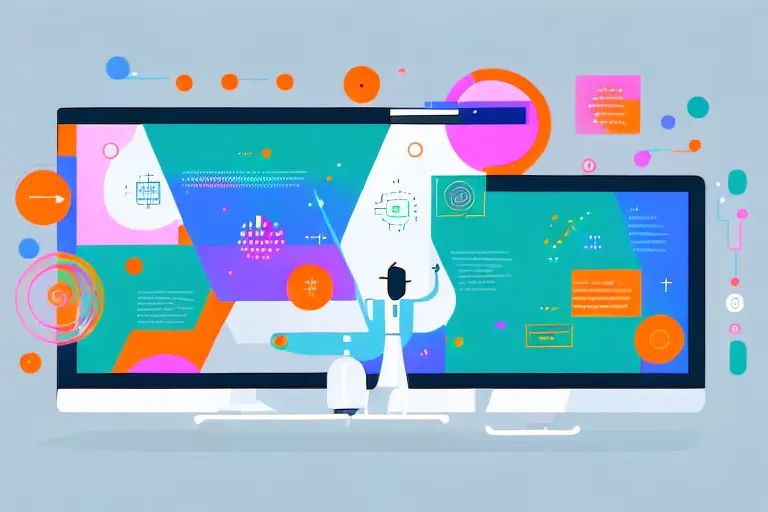In the fast-paced world of digital marketing, where every click counts and user attention spans are shorter than ever, the importance of user interface (UI) and user experience (UX) design cannot be overstated. These elements are crucial in creating websites, apps, and other digital platforms that not only attract visitors but also engage and convert them into loyal customers. This blog explores the pivotal role of UI/UX in digital marketing and how it can transform user interactions, drive engagement, and boost business growth.
UI and UX design, though often used interchangeably, refer to different aspects of the design process:
– User Interface (UI): This involves the visual elements of a product, such as buttons, icons, spacing, typography, and color schemes. It focuses on aesthetics and the interactive elements of a design.
– User Experience (UX): This encompasses the overall experience a user has with a product, including usability, functionality, and ease of navigation. It aims to create a seamless and enjoyable interaction for the user.
In digital marketing, the primary goal is to convert visitors into customers. UI/UX design plays a critical role in achieving this by ensuring that users have a positive and engaging experience on digital platforms. A well-designed UI/UX can lead to higher user satisfaction, increased time spent on site, and ultimately, higher conversion rates.

At the heart of effective UI/UX design is empathy. Understanding the needs, preferences, and pain points of your target audience is essential for creating experiences that resonate with them. This involves:
– User Research: Conducting surveys, interviews, and usability tests to gather insights into user behavior and preferences.
– Creating Personas: Develop detailed profiles of your ideal users to guide design decisions and ensure the interface meets their needs.
Personalization is a powerful tool in digital marketing. By tailoring the user experience to individual preferences and behaviors, you can create more engaging and relevant interactions. This can be achieved through:
– Dynamic Content: Showing personalized content based on user behavior and preferences.
– Customized Recommendations: Suggesting products or content that align with users’ past interactions and interests.
Simplifying User Journeys
One of the key aspects of effective UI/UX design is simplifying the user journey. This means making it easy for users to find what they are looking for and complete desired actions. Key strategies include:
– Intuitive Navigation: Designing clear and straightforward navigation menus.
– Effective Search Functionality: Providing a powerful search tool that helps users quickly locate information or products.
– Streamlined Processes: Simplifying processes like checkout or registration to minimize user effort and reduce friction.
Visual design plays a crucial role in shaping users’ perceptions of a brand. Effective UI design not only attracts users but also enhances their overall experience by providing a visually pleasing interface. Important aspects include:
– Consistency: Maintaining a consistent visual style across all digital platforms to build brand recognition.
– Accessibility: Designing interfaces accessible to all users, including those with disabilities.
– Emotional Design: Using colors, fonts, and images that evoke the desired emotions and reinforce the brand identity.

For e-commerce websites, UI/UX design is crucial in guiding users through the buying process and encouraging them to make a purchase. Key elements include:
– Product Pages: Providing detailed product descriptions, high-quality images, and customer reviews to help users make informed decisions.
– User-Friendly Checkout: Simplifying the checkout process to reduce cart abandonment rates.
– Customer Support: Integrating chatbots and live support to assist users in real time.
Content-driven websites, such as blogs or news sites, benefit from effective UI/UX design by keeping readers engaged and encouraging them to explore more content. Important features include:
– Readable Layouts: Using clean and uncluttered layouts that make reading easy and enjoyable.
– Interactive Elements: Incorporating multimedia content like videos, infographics, and interactive polls.
– Related Content: Suggesting related articles to keep users on the site longer.
For mobile apps, UI/UX design must cater to users on the go, providing a seamless and intuitive experience. Key considerations include:
– Responsive Design: Ensuring the app works well across different devices and screen sizes.
– Intuitive Gestures: Using familiar gestures like swiping and tapping to make navigation easy.
– Offline Functionality: Providing offline access to essential features to enhance usability.

Gathering user feedback is one of the best ways to measure the effectiveness of your UI/UX design. Encourage users to share their experiences and use this feedback to make continuous improvements.
Analytics tools can provide valuable insights into how users interact with your digital platforms. Important metrics to track include:
– Bounce Rate: A high bounce rate may indicate issues with the user experience.
– Session Duration: Longer sessions suggest users are finding value in your content.
– Conversion Rates: Tracking conversion rates helps understand how effective your UI/UX design is in driving desired actions.
Regular usability testing helps identify pain points and areas for improvement. By observing real users as they interact with your interface, you can gain a deeper understanding of their needs and preferences.
Artificial intelligence (AI) and machine learning are set to revolutionize UI/UX design by providing more personalized and adaptive user experiences. For example, AI can analyze user behavior to offer personalized recommendations and streamline navigation.
Augmented Reality (AR) and Virtual Reality (VR)
AR and VR technologies are opening up new possibilities for creating immersive digital experiences. These technologies can enhance the user experience by providing interactive and engaging content.
Voice Interfaces
With the growing popularity of voice assistants like Siri and Alexa, designing voice interfaces is becoming increasingly important. Voice interfaces offer a hands-free way for users to interact with digital platforms, making accessibility and usability even more critical.
Inclusive Design
Inclusive design is becoming a priority as brands strive to reach a broader audience. Designing for inclusivity means creating interfaces that are accessible to all users, regardless of their abilities or backgrounds. This not only improves the user experience but also demonstrates a commitment to diversity and equality.
Humanizing UI/UX in digital marketing is about creating genuine connections with your audience. It’s about understanding their needs, simplifying their journey, and making their interactions with your brand as pleasant and meaningful as possible. As technology continues to evolve, the focus on empathetic, personalized, and accessible design will become even more crucial.
By prioritizing human-centered design principles, businesses can create online experiences that not only meet users’ needs but also resonate with them on an emotional level. This, in turn, can drive engagement, loyalty, and ultimately, business success.
In the end, the role of UI/UX in digital marketing is not just about design; it’s about fostering relationships, building trust, and creating experiences that leave a lasting impression. As we move forward into a more digitally connected world, the human touch in UI/UX will be the key to standing out in a crowded marketplace.